You're welcome to the first step in mastering Python, one of the most popular programming languages in the world. In this guide, we'll introduce you to the fundamentals of Python programming. We'll cover basic syntax, data types, and control structures to get you started on your coding journey.
Why Python?
Python is a high-level, general-purpose programming language. It was created by Guido van Rossum and released in 1991. It is known for its simplicity and readability and has clear and concise syntax, making it an ideal choice for beginners.
It has a vast collection of built-in functions and modules such as the maths module which provides mathematical operations and the random module which provides random numbers.
Python is used in various fields, from web development and data analysis to artificial intelligence and scientific computing. Python's extensive libraries and community support mean you have a wealth of resources at your fingertips.
Setting Up Python
Before you dive into coding in Python, you'll need to set up Python on your machine.
- Download Python: Visit the official Python website and download the latest version suitable for your operating system.
- Install Python: Follow the installation instructions for your operating system. Make sure to check the option to add Python to your PATH during installation.
- Verify Installation: Open a command prompt or terminal and type
python --versionto ensure Python is installed correctly.
Writing Your First Python Program
Once you are done with the installation, it's now time to write your first Python program. Let's start with the classic "Hello, World!" program.
- Open a Text Editor: You can use any text editor like Notepad, Sublime Text, or an integrated development environment (IDE) like PyCharm or VSCode.
- Write the Code:
print("Hello, World!")
- Save the File: Save the file with a
.pyextension, for example,hello.py - Run the Program: Open a command prompt or terminal, navigate to the directory where you saved your file, and run the program using:
Hello, World!' printed on the screen.Basic Syntax and Data Types
Now, let's explore Python's basic syntax and data types.
- Variables: Variables are used to store data. You don't need to declare a variable's type; Python infers it. A variable is created the moment you first assign a value to it.
- Data Types: Data type is an important concept in programming. Variables can store data of different types, and different types can do different things. To know the data type of any object, use the type() function.
- Strings: Strings in Python are surrounded by either single quotation marks or double quotation marks. That is text data enclosed in quotes.
- Integers: Whole numbers.
- Floats: Decimal numbers.
- Booleans: True or False values.
message = "Hello, Python!"year = 2024
pi = 3.14159
is_student = True
name = "Alice"
age = 25
height = 5.5
Control Structures
Control structures allow you to control the flow of your program.
- If Statements: Used for conditional execution. An "if statement" is written by using the if keyword.
- Loops: Used for repetitive tasks.
age = 20 if age >= 18: print("You are an adult.") else: print("You are a minor.")
- For Loop: A for loop is used for iterating over a sequence.
- While Loop: The while loop helps us execute a set of statements as long as a condition is true.
for i in range(5): print(i)
count = 0 while count < 5: print(count) count += 1
Functions
A function is a block of code which only runs when it is called. It allows you to encapsulate reusable code.
- Defining a Function: In Python, a function is defined using the def keyword:
- Calling a Function: To call a function, use the function name followed by parenthesis:
def greet(name): return f"Hello, {name}!"
print(greet("Alice"))
Conclusion
Before I conclude, let me congratulate you! for coming this far, you've just learned the basics of Python programming. This covered setting up Python, writing your first program, understanding basic syntax, and using control structures and functions. Python's simplicity and versatility make it an excellent choice for beginners and experienced programmers alike.
As you continue your Python journey, remember that practice is key. Experiment with the code examples, try writing your own programs and explore Python's extensive libraries. In future posts, we'll dive deeper into advanced topics like object-oriented programming, data analysis, and web development.
Happy Learning! 😊






0 Comments